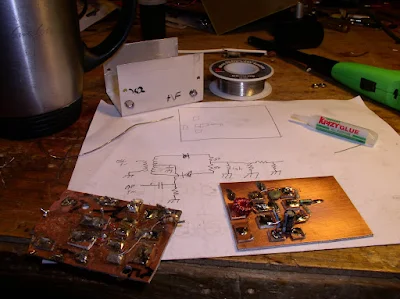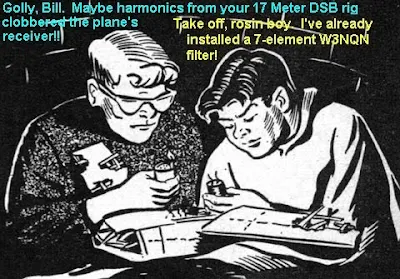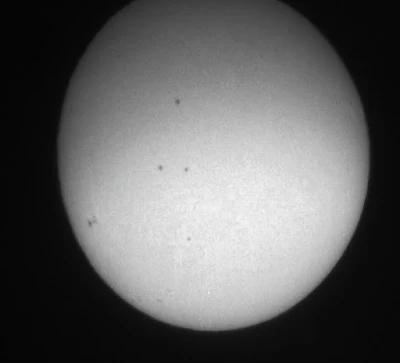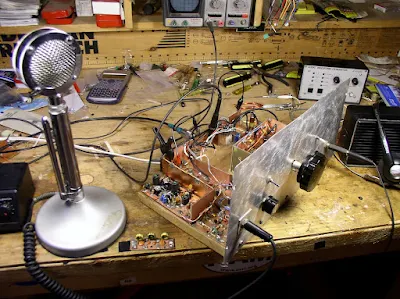
My effort to bring my Azorean 17 meter DSB rig back to life continues. This is proving to be harder than I thought. I'm still taming my version the JBOT amp. It still seems to break into oscillation -- I think the oscillation freq is around 1 MHz. But I am making progress.
I had to go back and work on the balance modulator circuit. I really like the simple two diode singly balanced mixer circuit. But my original Azorean board had, like the oscillator board, been through a few too many rounds of modification and repair. I decided to start over. See above. I even came up with my own little innovation on this circuit. Doug DeMaw's original design called for a 100 ohm pot at the junction of the two diodes, with the signal coming off the tap. You adjust the pot to balance the circuit and null out the carrier. But I didn't have a 100 ohm pot. Lots of 1K controls were available, so I put in two 50 ohm resistors in place of the pot, then put the 1k pot between the diodes, with the tap to ground. This balances things out nicely. See below.
 I hope to get a podcast out next week, but I've been suffering from a nasty headcold that would have introduced all kinds of weird audio effects.
I hope to get a podcast out next week, but I've been suffering from a nasty headcold that would have introduced all kinds of weird audio effects. Our book: "SolderSmoke -- Global Adventures in Wireless Electronics"http://soldersmoke.com/book.htmOur coffee mugs, T-Shirts, bumper stickers: http://www.cafepress.com/SolderSmokeOur Book Store: http://astore.amazon.com/contracross-20










